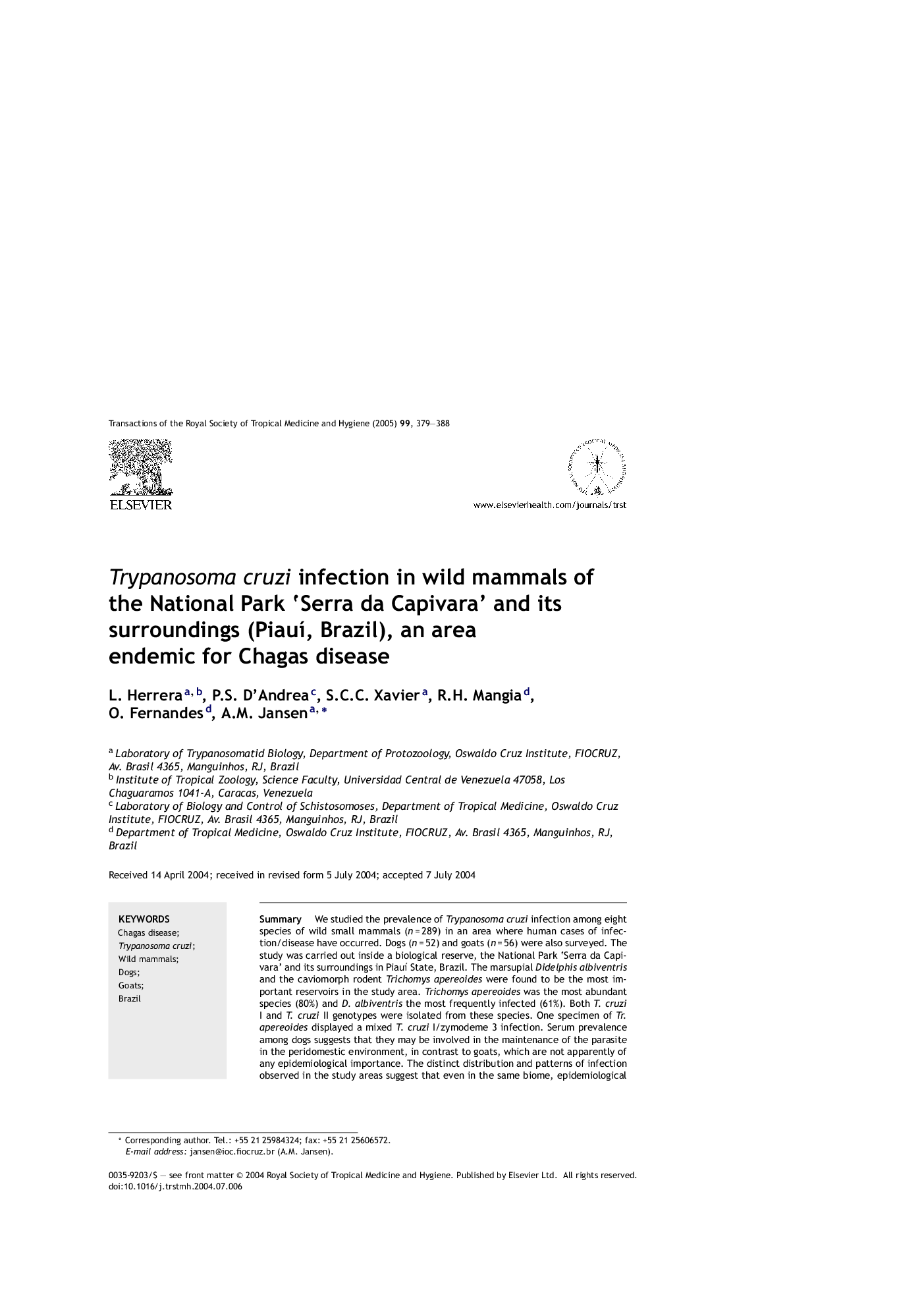| Article ID | Journal | Published Year | Pages | File Type |
|---|---|---|---|---|
| 10030592 | Transactions of the Royal Society of Tropical Medicine and Hygiene | 2005 | 10 Pages |
Abstract
We studied the prevalence of Trypanosoma cruzi infection among eight species of wild small mammals (n = 289) in an area where human cases of infection/disease have occurred. Dogs (n = 52) and goats (n = 56) were also surveyed. The study was carried out inside a biological reserve, the National Park 'Serra da Capivara' and its surroundings in Piauà State, Brazil. The marsupial Didelphis albiventris and the caviomorph rodent Trichomys apereoides were found to be the most important reservoirs in the study area. Trichomys apereoides was the most abundant species (80%) and D. albiventris the most frequently infected (61%). Both T. cruzi I and T. cruzi II genotypes were isolated from these species. One specimen of Tr. apereoides displayed a mixed T. cruzi I/zymodeme 3 infection. Serum prevalence among dogs suggests that they may be involved in the maintenance of the parasite in the peridomestic environment, in contrast to goats, which are not apparently of any epidemiological importance. The distinct distribution and patterns of infection observed in the study areas suggest that even in the same biome, epidemiological studies or determination of control measures must take into account ecological peculiarities.
Related Topics
Life Sciences
Immunology and Microbiology
Applied Microbiology and Biotechnology
Authors
L. Herrera, P.S. D'Andrea, S.C.C. Xavier, R.H. Mangia, O. Fernandes, A.M. Jansen,
